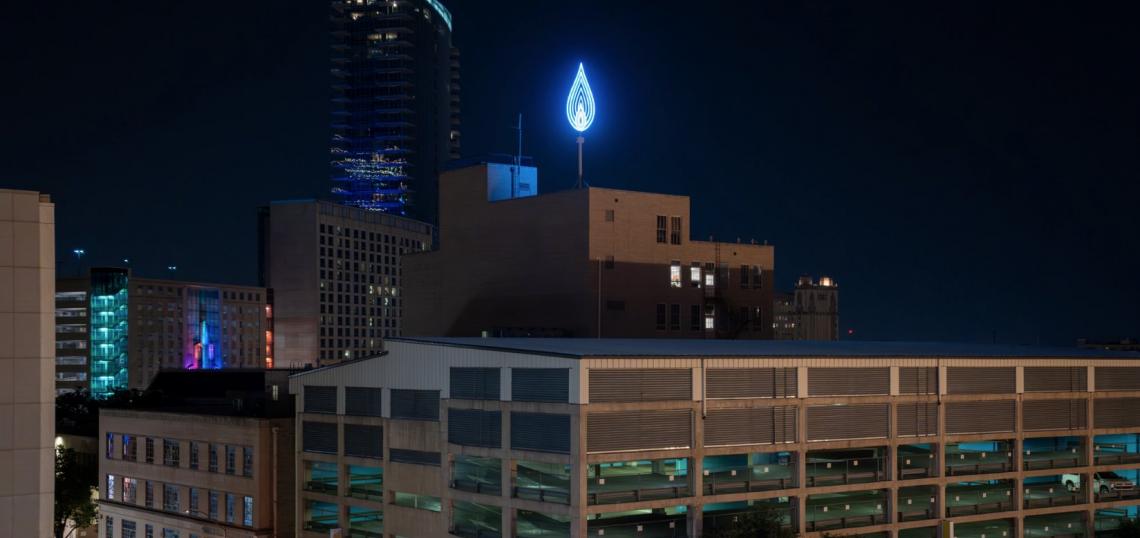In July of 2023, the City of Fort Worth completed restoration of the iconic blue flame atop the City Hall Annex at 901 Monroe Street. The Annex was formerly the Lone Star Gas Co. headquarters, with the blue flame representing the company's logo. The timing of the project's completion is convenient: the municipal offices located in the building, including the Water Department's customer service lobby, will be moving to the new City Hall, allowing the city to sell the building in its restored state.
Installed in 1957, the neon flame was a fixture of the Fort Worth skyline until structural issues forced its removal and renovation in 2018. The 20-foot-tall sign had first shown signs of aging in 2004, when it was deemed necessary to stop its rotation. Brian Glass, Fort Worth City Architect, provided both a historical overview and an explanation of the restoration timeline:
- The building was designed in 1929 by architect Wyatt C. Hedrick in the Art Deco style and is a historic and cultural landmark.
- Three additional floors were added to the building in 1957, the same year the blue flame was installed. The Lone Star Gas logo, featuring neon lighting, rotated until 2004.
- The City and Fort Worth Art Commission explored opportunities to restore the flame, but without a recognized artist it could not be accomplished through the arts program. By 2018, after years of freewheeling in the wind, the bearings had failed and the flame was leaning on its structural mount.
- In 2018, the City’s Historic & Cultural Landmarks Commission approved a certificate of appropriateness to allow the removal, restoration and reinstallation of the flame.
- The flame was stored at the City’s James Avenue Service Center until Property Management Department PayGo funds were identified for the restoration.
- A contractor repaired existing enamel paint, replaced neon lights with LED lights and replaced the bearings and motor to make the sign rotate again.
While perhaps not the most iconic trophy asset in The Metroplex, the City is certainly doing taxpayers a service by not only restoring the asset to its former glory, but also by modernizing the historical feature with highly efficient LEDs and modern hardware for the rotation. The City's low cost of capital and (likely) ability to bypass red-tape imply the renovations will be worth more to a buyer than they cost The City, leaving taxpayers to enjoy the value-add proceeds. The success of this project is also a good sign for other plans to modernize municipal assets.
Office is certainly not the hottest asset class at the moment. Additionally, having been designed nearly a century ago, 901 Monroe likely faces the same issues that plague other legacy offices. One such issue is that of load-bearing walls, which limit the ability to have flexible, open-floor offices. These walls also force legacy assets to forgo window space, a far cry from modern towers with 360 degree floor-to-ceiling windows.
Converting the asset into multifamily is another plausible option for investors. While the issue of plumbing and gas lines for individual units persists, The City's sale of the building will leave it vacant, negating the issue of relocating existing tenants. The wall issues would remain, but private residents will likely have an easier time justifying a premium price for a spot in a historic building than a company forced to answer to shareholders.






